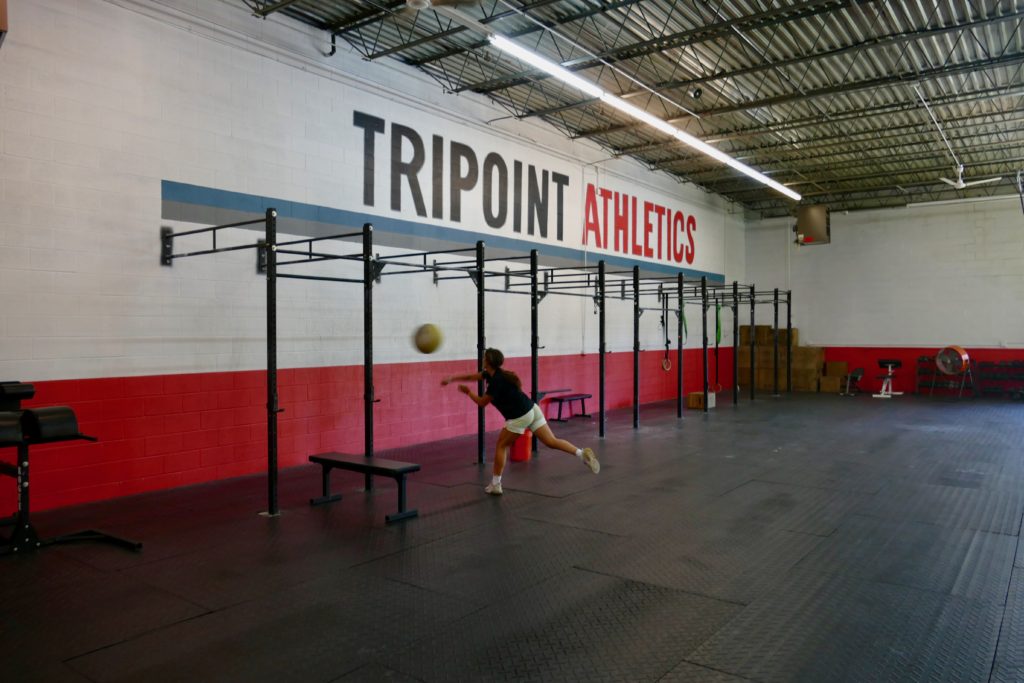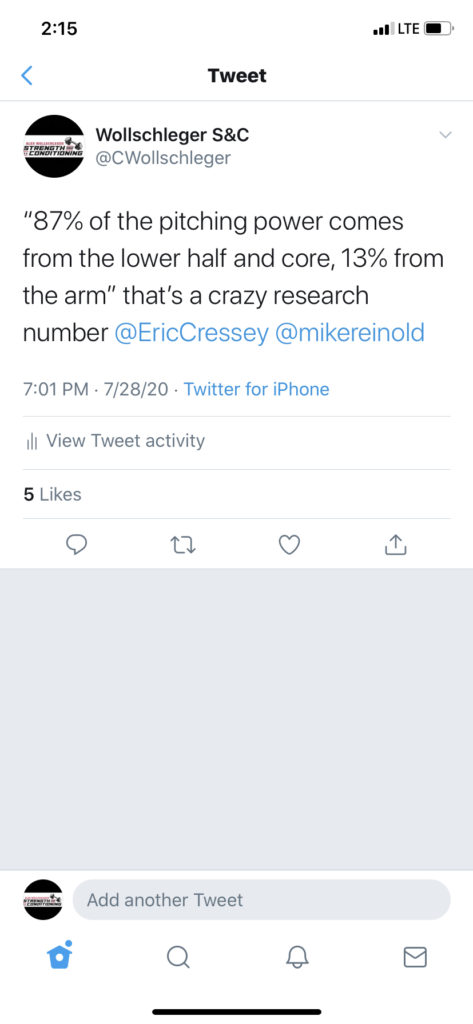
Training baseball and softball players has become sort of my forte the past few years. I get a lot of questions about how to get a stronger, more powerful swing, and also how do I throw harder. Lots of conflicting reports out there about long tossing and weighted baseballs. I have come to a solid conclusion on how to up your son or daughters training without creating injuries. This is a slow and steady process and finding quality coaches are key for long term success. Here are the keys for baseball and softball training.
Technique
This seems like a no brainer, but a lot of people want to jump to weighted baseballs and throwing further before we get the proper mechanics down. This is similar to back squatting heavy without mastering the air squat. Think about long term development here, chasing velocity without proper mechanics can create undue stress on the arm especially in pitchers. I am by no means a pitching coach or a swing coach, however I have done a lot of research on proper mechanics. Trying to get people to use their lower half (hips and legs) to create power is low lying fruit that can increase performance.
Throwing a baseball or softball creates a lot of stress on the arm and doing so with good mechanics can reduce injury and also increase performance. I recommend finding a quality coach to check your swing or throwing mechanics.
Get Stronger
This is also low lying fruit stuff that is undebatable. Following a structured workout routine that starts from the ground up can make a huge difference in performance and injury prevention. You should start with bodyweight exercises with good technique such as bodyweight squats, push ups, pull ups, lunges, sit ups. Then progress to adding light weight with the same movements. Kettlebells and dumbbells work great for this. We can stay here especially if they are younger, or we can progress to a barbell for added strength gains.
This training should emphasize strengthening the core and lower body as much as possible. I took this note from a podcast I recently listened to:

87% of power in pitching comes from the lower half. We generally tend to focus on stengthening the arms especially in pitchers, obviously this doesnt make a lot of sense. How do we accomplish this? At first we need to start with the basics, maybe a kettlebell swing, a RDL, or even a seated good morning to learn the proper hip hinge. After this we can progress to a deadlift, I personally like the trap bar for young athletes due to the fact that the handles are higher and you can tend to load the bar up a bit more. Squatting and lunging should also be a staple in the program, start with bodyweight and move to kettlebells and dumbbells.
Pressing variations-I dont mind bench pressing for position players, I dont like it for pitchers and catchers. I prefer dumbbell presses and landmine presses. Something that allows the shoulders to move through a full range of motion freely. Bench pressing demands you lock your shoulder blades down, and also creates a shortened pec muscle. This can be detrimental to a pitcher trying to get his/her arm overhead. Watch how the landmine press allows free shoulder movement. Try this out:
Core work
Everyone talks about doing “core work” as part of their routine. I’m not 100% sure people know exactly what that means or what to do. I prefer to stay away from flexion based movements such as sit ups and crunches. Instead think about core stabilizing movements as well as “anti-rotation” movements. Planks, side planks, suitcase carries, overhead walks, and swiss ball work are staples in a good program. The core must be able to stabilize in order for the arm to efficiently go overhead and stabilizes the spine during rotational movements. 2 of my favorite “obscure” core movements are anti-rotation holds and stir the pot. As we need to progress further try out these ring push outs. This exercise requires your shoulder blades and core muscles to stabilize while your arms go overhead:
Medball work
This has been a game changer for me when training athletes. This allows me to teach kids how to use their lower half to create power. For some of the more experienced athletes it allows me to strengthen their rotational power without creating a lot of soreness. Here are a few of my favorite medball exercises.
Split Stance straight arm toss-This allows me to introduce the medballs to kids without a lot going on
Shotput toss-This is going to look more like a throwing motion due to the ball being higher.
1/2k step back scoop toss-This adds a dynamic motion into the medball toss. I would save this for more advanced athletes.
Weighted baseball and long toss
There is a lot of conflicting research out there about throwing a heavier ball or throwing the ball further to create gains. What I do know is that throwing a 5 oz. baseball is stressful to the shoulder, throwing a 12 oz baseball is very stressful to the shoulder. Lets take care of the low lying fruit stuff before we move to the 3rd wave adaptations. Work on mechanics of hitting and throwing, getting stronger in your lower body and core, and working some medball exercises in to your routine.
Arm care drills
Quality band work is key for the rotator cuff muscles. These muscles get abused during the throwing motion so strengthening them is key. Quality is the key word here. These should be done slowly and with intention. Too many times we see people rushing through these and may do more harm than good. 3 of my favorite exercises are:
Banded face pulls-
Banded Reverse flys-
Banded Scaption-
Long slow progression
No need to rush development. Follow these steps, mix in some skill work and the progress will come. We want to take a low trajectory towards a distant horizon. This means that we should be aiming for slow steady progress.
alwollschleger@gmail.com
Like this article? Sign up for mailing list on the homepage
Follow me on social media
IG-Wollschleger_training
Facebook-wollschleger S&C
Twitter-CWollschlege

